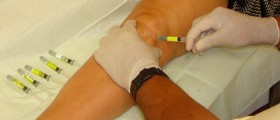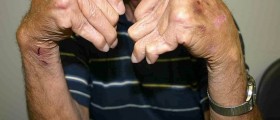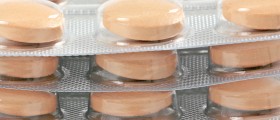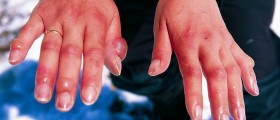
During the process of aging, the skin normally loses its collagen, elastin and becomes more susceptible to wrinkles and fine lines. However, people have managed to identify some materials which can efficiently prevent the skin from becoming saggy.
Dermal fillers are such materials. They are injected into the skin that needs to be plumped up again and may successfully restore the former youthful appearance of the skin. Dermal fillers vary in their viscosity. Superficial fillers are used for fine lines while deeper dermal fillers are generally recommended for deep wrinkles and are also used in purpose of lip augmentation as well as nose bridge treatment.
Among several dermal fillers, today most people opt for hyaluronic acid. This acid is normally produced in the body and is distributed in the skin both in superficial and deeper layers. It is in charge of skin's elasticity and preserves all the water the skin must have. Since the amount of hyaluronic acid significantly droops with age, this acid can be substituted via injections.Dermal Fillers - Prior to the Treatment
Prior to the procedure, doctors evaluate patients and decide who is eligible for this type of treatment.
Patients who have been confirmed to have allergy or hypersensitivity to hyaluronic acid as well as individuals who have experienced any reaction during previous dermal filler treatment are not suitable candidates for dermal fillers. The treatment is also not performed in patients allergic to Aspirin, NSAIDs and isotretinoin. These individuals should consider other treatment options.
Furthermore, dermal fillers are also not recommended for pregnant women and breastfeeding ones. Patients suffering from SLE, rheumatoid arthritis and psoriasis as well as those with a history of sores and fever blisters do not undergo the procedure as well.
Finally, any active inflammation or infection in the area such as active acne is a contraindication, but the procedure may be performed once the inflammation or infection is completely eradicated.
Dermal Fillers Side Effects
The procedure may cause mild discomfort. Pain is more intensive in case of injecting dermal fillers in the nose or the lips. Because of that some patients require a local anesthetic cream or injection before the treatment.
Normal reactions after dermal filler injections include redness, swelling, itching and mild pain, all of which tend to subside within 72 hours after the procedure. Bleeding is usually mild and it stops once the person places firm pressure over the bleeding site with a clean piece of gauze.
If there is bruising, it withdraws after 3-5 days.
Patients rarely develop allergic reactions and these generally manifest through prolonged redness and swelling of the treated area, itching and bump formation.
In individuals with a history of cold sores and fever blisters the treatment may initiate recurrence of the infection so they are recommended to take antiviral drugs prior to the treatment.
Finally, in some cases red lumps may form underneath the treated skin many months after the procedure. They may remain permanently and cause additional aesthetic problems.

















Your thoughts on this
Loading...